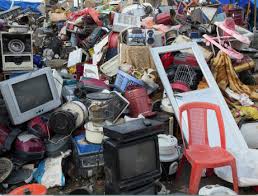I’ve spent a lifetime collecting memories, souvenirs, keepsakes, and other tokens of remembrance. In many cases, even though I paid for them, they really have no value other than personal. They are all only worth what someone else is willing to pay, even those that might have appreciated in value. My wife collects Broadway posters & programs, Fiesta dinnerware, Limoges, signed cookbooks, silverware, jewelry, magnets, and china. She’s inherited Hummel figurines and antique crystal glassware from her mother. My mother left me a stamp collection and lots of photographs. She also collected sewing thimbles and miniatures, that inspired some of my interests in collecting, whereas my father was not a collector, disturbed by anything resembling clutter. Later in life, he put together a small collection of walking sticks, but kept them neatly organized in a corner of the house.
My neighbor growing-up collected baseball cards and coins, so I became interested in these items. Any hobby can get expensive especially if you’re collecting money, so I limited my enthusiasm to pennies. I have yet to finish a collection of Lincoln head cents dating back to 1909. In the last couple years, I’ve gone back to baseball cards as a retirement project, but I’ve tried to stay away from Hall of Fame players because they logically command the highest prices. I’ve also built collections of cuff-links, ties, and suspenders in keeping with my Dapper Dan business image that I tried to maintain while working. With any type of collecting, it’s all about supply and demand; if something is wanted and there are few in existence then the value increases. Thanks to all those moms that threw out childhood baseball card collections from the 1950’s and 60’s, prices on Mickey Mantle cards, for example, have gone through the roof. In the case of collecting pennies, worth is solely determined by the number of coins that were originally minted and current condition.
I’ve spent time in retirement organizing my collectibles and adding to them, even though I should probably be divesting. My son will be interested in some of my baseball memorabilia, but my extensive Sherm Lollar collection is probably not of interest to anyone. He was my favorite player growing up, a catcher for the Chicago White Sox in the 60’s and early 70’s. He will probably never be a Hall of Fame inductee, even though he was arguably the greatest defensive catcher in history. Cooperstown seems to be reserved for great pitchers and offensive powerhouses that often made good pitching look bad. He was my retirement foyer into collecting baseball cards again since most of his cards and memorabilia are affordable. It gave me a good sense of the variety of cards that were produced over the 17-year span of his playing career followed by several coaching stints. He touched the lives of many HOF members along the way from Yogi Berra to Catfish Hunter and Reggie Jackson. Who was that Masked Man? (See Post #5) and how to eventually get rid of this collection?
At this stage of life, we should be un-collecting rather than collecting, divesting rather than investing. Otherwise, my heirs are going to be stuck with a bunch of stuff that they don’t want. As I’ve learned, it’s much easier to collect things than to get rid of them. I know our family won’t be interested in items like stamps, magnets, cookbooks, photos, porcelain boxes, and even silver service. They take up a lot of space and are a dime-a-dozen on e-Bay. Ideally, we’d like to find people that value these things as much as we do, but without the joy of collecting throughout the years, they are nothing but a pile of junk. It’s a shame that in as we get older, we finally develop the financial resources to buy things we are passionate about, only to realize that they are items that nobody else wants. As they say, “one man’s junk is another man’s treasure,” well it also goes to prove that one man’s treasures are another man’s junk!

Leave a Reply